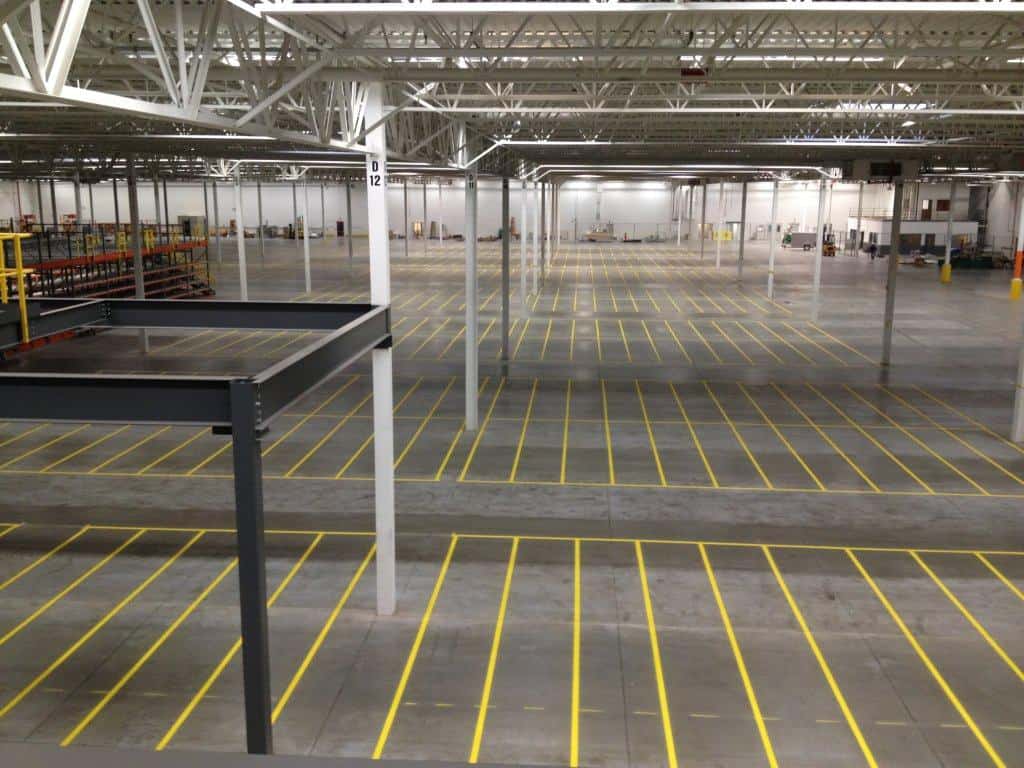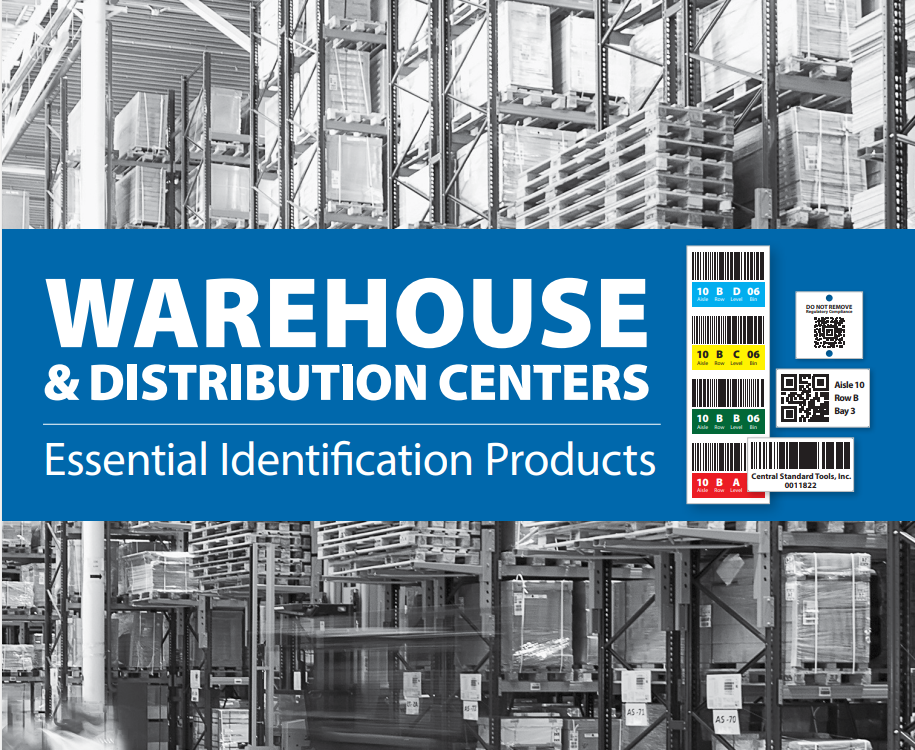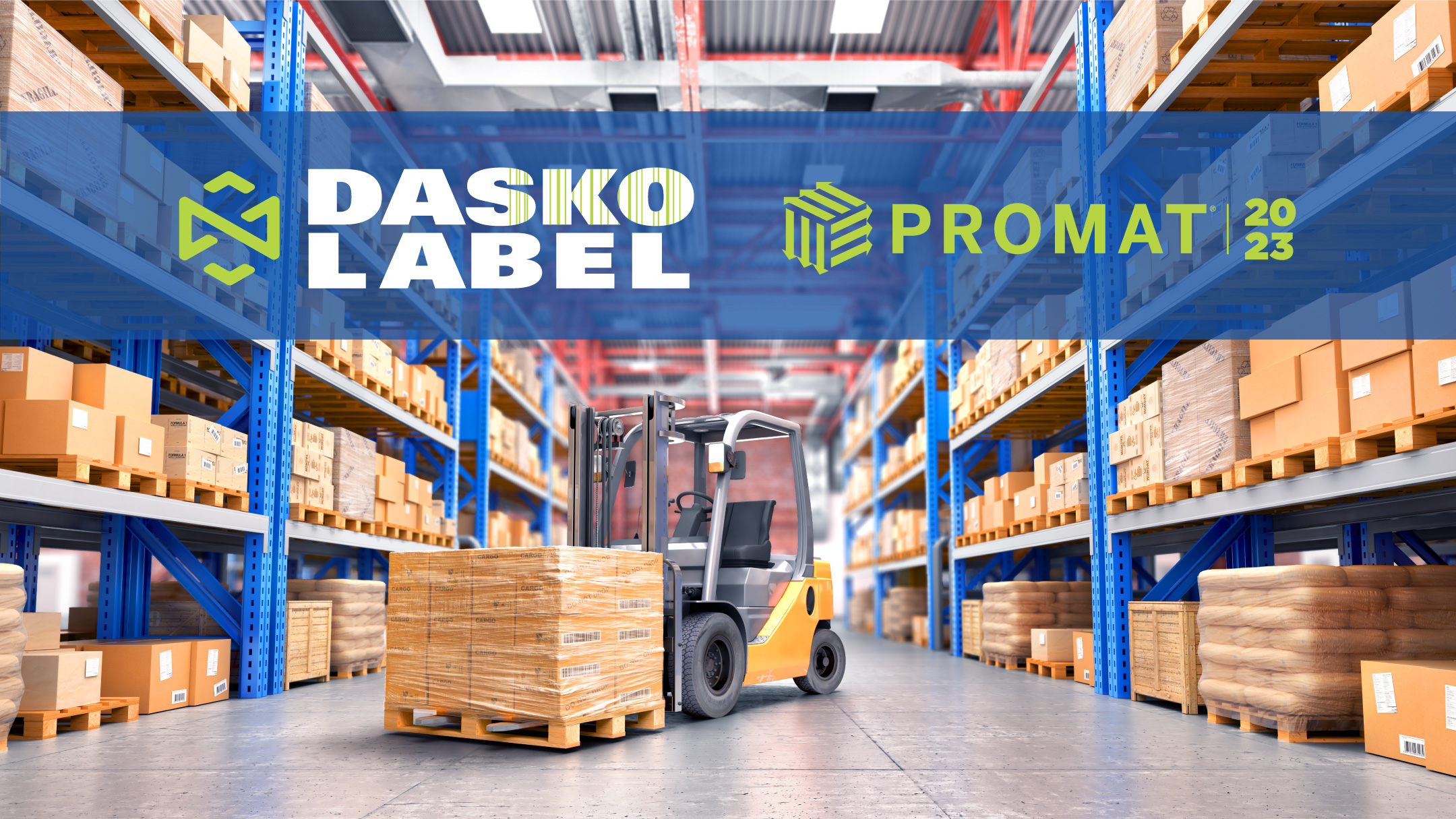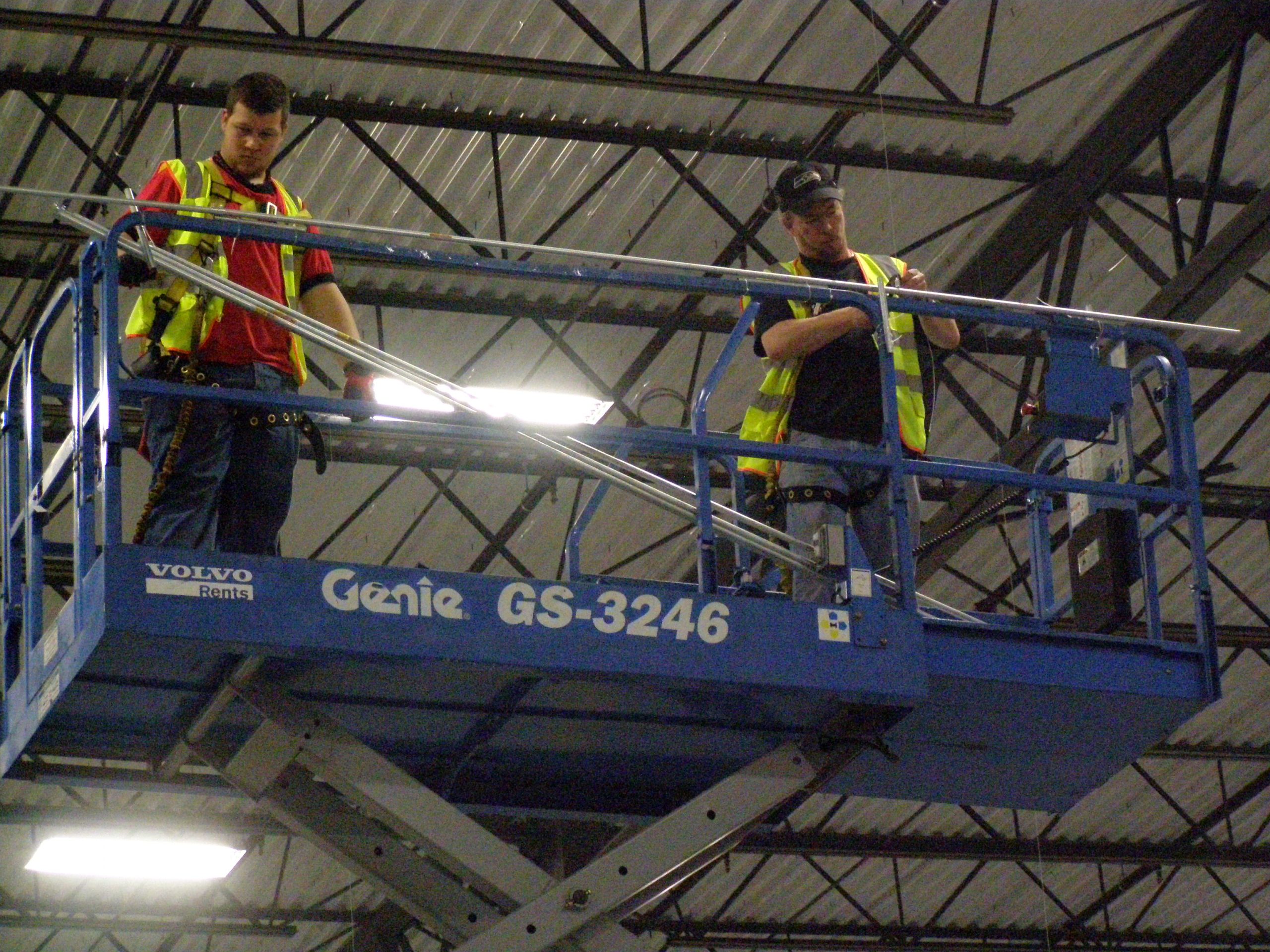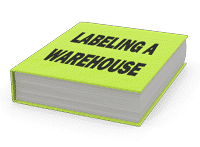When business leaders outline goals for their warehouses and distribution centers, efficiency is nearly always at the forefront. This is certainly important, but it’s not possible unless the workers who form the backbone of every warehouse operation remain safe.
Unfortunately, warehouse floors are full of potential hazards that could lead to serious injury; these hazards include vehicle traffic, heavy equipment, stacked products and hazardous materials, so workplace injuries are common. Alarming data from the Occupational Safety and Health Administration (OSHA) reveals that fatalities are more prevalent than in other work settings. In fact, the rate of fatal injuries within the warehousing industry exceeds the average across all sectors.
From heavy pallets to constantly moving forklifts, risks abound. Many of these are within the facility’s control, however. If a strong safety program is built into the everyday operation of each facility, there’s no reason why the health and wellbeing of hardworking warehouse employees should be compromised.
11 WAREHOUSE SAFETY TIPS
Safety culture is key to protecting employees at all levels. Injury prevention should be built into every aspect of warehousing, beginning with layout and workflows and extending to protective equipment, scheduling, and vehicle operation.
Below, we’ve highlighted several of the most important safety measures worth implementing within every modern warehouse. Follow these warehouse safety tips to deliver the comprehensive protection your employees deserve:
- Properly train employees in all aspects of their job
- Install safety signage
- Clearly identify all emergency exits
- Implement warehouse floor labeling and markings
- Provide detailed labels throughout the work area
- Enforce cleaning standards
- Implement vehicle safety rules
- Enforce the use of personal protective equipment (PPE)
- Perform regular equipment maintenance checks
- Audit your existing safety protocols
- Get outside help from third party consultants
We go into further detail about each of these ideas and how they can help create a safe work environment below.
1. IT ALL STARTS WITH PROPER TRAINING
Targeted training rests at the core of any successful safety initiative. Employees should always know what is expected of them — and what they can do to make themselves and their coworkers safer.
This should encompass every aspect of a person’s job, as seemingly minor tasks play heavily into the safety of the entire operation. Essentials include:
- Cleaning. A cluttered environment is, by nature, unsafe. Employees should know where all items are stored, which cleaning regimens are necessary, and how often certain spaces need to be addressed. All employees should be familiar with cleaning routines. The 5S method is commonly used within warehouse operations to minimize clutter and improve overall organization.
- Emergency response. Do you recall completing fire drills at school? Safety training in the workplace looks similar in many respects; it provides an opportunity to think through and practice the most logical emergency responses when panic isn’t clouding your judgment. Over time, emergency response becomes a matter of muscle memory.
- Vehicle operation. Do you feel confident that your employees can safely operate forklifts and other warehouse vehicles? Extensive training is necessary, as are regular updates to ensure that all drivers’ skills are current.
- Ergonomics. Overuse injuries may not be as immediately obvious as their acute counterparts, but they’re still a huge problem in warehousing. Task-specific training should delve into ergonomics. Employees should know exactly how physical tasks (such as manual lifting) can be carried out to limit strain on their bodies.
2. INSTALL SAFETY SIGNAGE
Safety signs let employees know when hazards are present and how they should respond. These should be displayed in highly visible locations. They’re often hung from the ceiling, although they can also be attached to racks or posts.
Location signs are at the heart of any safety signage strategy. These clarify floor locations to promote a safe and orderly workflow. Other signs may be dictated by OSHA requirements, company policies, or even local fire codes. Examples include signs that highlight where the fire extinguisher (or first aid kit) is located and warning signs for hazardous chemicals stored nearby.
3. IDENTIFY ALL EMERGENCY EXITS
In the worst-case scenario, an easily identifiable exit can spell the difference between life and death. The importance of easy-to-find exits cannot be overstated. Not only is this essential in the event of an emergency, it plays heavily into OSHA compliance.
In addition to identifying exits with signs that can be spotted from afar, your facility must maintain unobstructed exit routes that allow employees to promptly leave the building if needed.
4. IMPLEMENT FLOOR LABELING
Pedestrian and vehicle traffic areas should be clearly marked on the floor to reduce the potential for collisions.
Other safety reminders should also be highlighted. For example, floor labels can reveal which areas might be hazardous — or where PPE (such as hard hats or safety goggles) is required. During the height of the pandemic, floor signs also helped employees maintain social distancing.
5. PROVIDE CLEAR LABELING EVERYWHERE
Detail-oriented labeling promotes not only greater efficiency and accuracy within warehouse facilities but also safety. For example, pallets and bins should be marked with relevant weight capacities. This limits the potential for overloading, which can be incredibly dangerous.
Readability is essential, so uniform procedures for pallet labeling must be implemented. Place multiple labels on the sides of the pallet so that at least one is always visible if other pallets prompt visual obstructions.
6. ENFORCE CLEANING STANDARDS
We’ve touched on how employees should be trained in proper cleaning procedures, but enforcement may be needed to ensure that workers charged with these tasks adhere closely to the guidelines. This may take the form of cleaning audits, in which spaces that are prone to clutter are checked at unexpected times to verify that they have been thoroughly cleaned.
7. RULES FOR MANUAL AND GUIDED VEHICLE SAFETY
From forklifts to carts, a variety of vehicles promise to enhance warehouse efficiency while limiting the need for manual labor. Unfortunately, these vehicles are a common cause of injury, particularly when they aren’t used responsibly. As we’ve mentioned, thorough training is essential — but visual cues and enforcement can also help.
First and foremost, a strict speed limit is essential. The Material Handling Equipment Distributors Association (MHEDA) recommends that forklifts travel no faster than 8 miles per hour. Ideally, this limit will drop further when pedestrians are present.
Load ratings also matter. Forklift operators can consistently travel within the facility’s speed limit and still compromise safety if they neglect to stay within the vehicle’s recommended load rating. No matter how heavy, each load should be properly centered — and placed strategically so that the center of gravity doesn’t cause the forklift to tip forward.
Finally, visibility should be a priority. When forklift drivers cannot see over high loads, lookouts or reverse operation will prove necessary.
As automated solutions take over, vehicle safety protocol may begin to look a bit different from the forklift-dominant strategies of yesteryear. Automated guided vehicles (AGVs) might not have the same potential for user error as their manually operated counterparts, but accidents are still possible. As such, regular inspections are critical.
8. ENFORCE THE USE OF PROTECTIVE EQUIPMENT
Personal protective equipment can enhance safety for employees who work with hazardous chemicals or are otherwise exposed to significant risks — but only if the proper gear is consistently used. Unfortunately, rules alone aren’t always enough to get employees to comply.
Enforcement may ultimately prove necessary to ensure that everybody wears the right gear. Management-level employees can set a powerful example by consistently wearing PPE in situations that call for extra protection. If they observe that workers neglect to wear required safety gear, they can discuss these issues directly with the employees in question.
9. REGULARLY CHECK ALL EQUIPMENT
Even high-quality equipment can be prone to wear and tear. This, in turn, may lead to malfunctions that compromise employee safety. A maintenance schedule should keep all important devices in pristine shape, but you’ll also need to conduct regular checks to ensure that equipment is functioning as desired.
Create a routine to verify that all equipment is examined on a regular basis. Conveyors should be a key area of focus, as pinch points are common sources of injuries. Lockout or tagout programs are also recommended, as these reduce the risk of accidentally energized equipment.
10. PRACTICE AND KEEP IMPROVING
No matter how effective your safety protocol seems at the moment, there is always room for improvement. Regular audits should reveal whether your facility is as safe as it seems. Employee feedback can also prove beneficial. Encourage workers to share any concerns they may have about safety and commit to addressing these issues as quickly as possible.
11. BRING IN THIRD-PARTY CONSULTANTS
If you’re struggling to adopt workplace safety procedures without compromising the efficiency or throughput of your operation, seek insights from outside experts. A new perspective may uncover safety hazards you’d otherwise struggle to spot on your own. Third-party consultants can also provide targeted suggestions so you know how, exactly, to implement top safety solutions within your facilities.
CREATE A SAFER ENVIRONMENT
At DASKO LABEL, we are well aware of the many hazards that warehouse workers face on a daily basis. We’re determined to do our part and make on-the-job injuries a thing of the past. To that end, we provide a vast array of targeted solutions designed to promote safe practices.
From floor striping to warehouse signs and aisle labels, our safety initiatives can make a world of difference. We even work with businesses to implement the 5S methodology throughout their operations.
Just as importantly, we provide a wealth of insight to help you determine which solutions are best capable of delivering the specific safety improvements your business requires. If you’re ready to develop the safe and orderly warehouse environment your employees deserve, get in touch.

